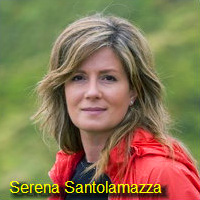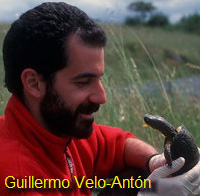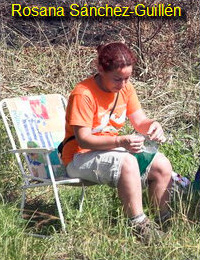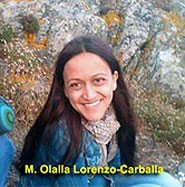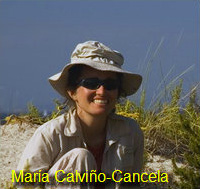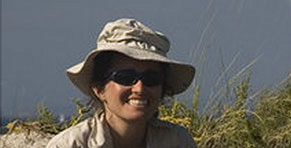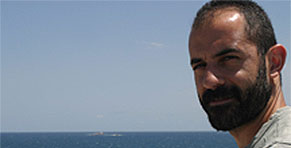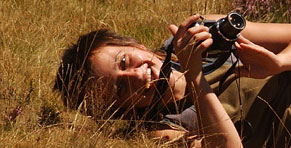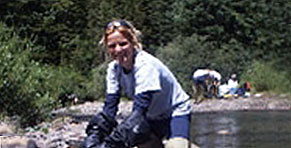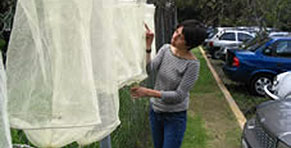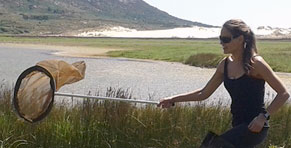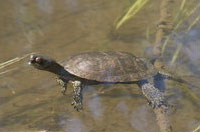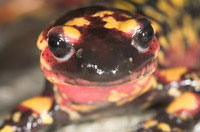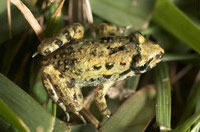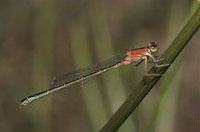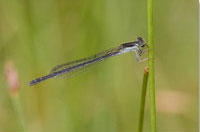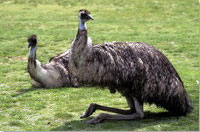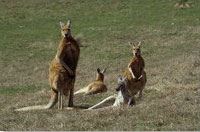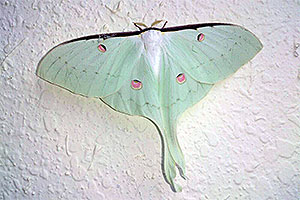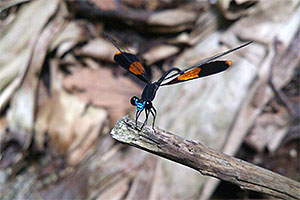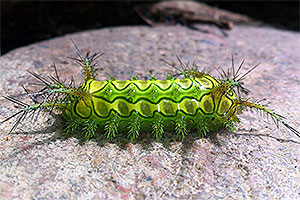Laboratory of Evolutionary and Conservation Ecology
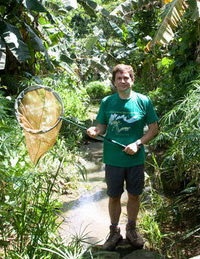 Adolfo Cordero, Head of the laboratory. At a stream, habitat of Protoneura capillaris in Cuba. May 2007.
Adolfo Cordero, Head of the laboratory. At a stream, habitat of Protoneura capillaris in Cuba. May 2007.Current collaborations
- We have an ongoing collaboration since several years, on diverse topics related to sexual selection of odonates, with Alex Córdoba (UNAM, México) and Carlo Utzeri (University of Rome, Italy).
- We are also collaborating with Eric Svensson and Bengt Hanson (University of Lund, Sweden) for the study of female colour polymorphism in Ischnura elegans and I. graellsii.
- Further, we collaborate with David Thompson (University of Liverpool, UK) and Phillip C. Watts (University of Liverpool, UK/University of Oulu, Finland) on population genetics and conservation of Coenagrion mercuriale, Macromia splendens, Macromia splendens, Macromia splendens and Oxygastra curtisii.
- To study the reproductive behaviour of two endemic Cuban odonates (Hypotestes, Microneura/Protoneuridae) we have a collaboration with Adrián Trapero and Yusdiel Torres, from the University of Oriente, Santiago de Cuba (Cuba).
- In 2008 we worked on Peruvian rainforest studying behaviour of Polythore, with Chris Beatty (now at Santa Clara Univ., California), Joachim Hoffmann (ALAUDA, Germany), Tom Sherratt (University of Carleton, Canada) and Hans Van Gossum (University of Antwerp, Belgium).
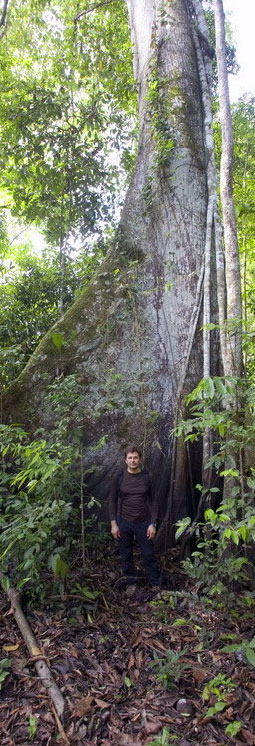 Adolfo Cordero at the National Park Pacaya-Samiria, Amazonian forest of Perú. June 2008.
Adolfo Cordero at the National Park Pacaya-Samiria, Amazonian forest of Perú. June 2008.
More info
Over many years we have worked on the population ecology, and biological control of the Eucalyptus weevil, Gonipterus scutellatus.
- Santolamazza Carbone, S. & Cordero Rivera, A. 2003. Superparasitism and sex ratio adjustment in a wasp parasitoid: results at variance with local mate competition?. Oecologia, 136: 365-373.
- Santolamazza Carbone, S.; A. Rodríguez-Illamola & A. Cordero Rivera. 2006. Thermal requirements and phenology of the Eucalyptus snout-beetle Gonipterus scutellatus Gyllenhal. Journal of Applied Entomology, 130: 368-376.
We have also worked intensively on the conservation ecology and genetics of the European pond turtle, Emys orbicularis.
- Velo-Antón, G., Godinho, R., Ayres, C., Ferrand, N., and Cordero Rivera, A. 2007. Assignment tests applied to relocate individuals of unknown origin in a threatened species, the European pond turtle (Emys orbicularis). Amphibia-Reptilia, 28: 475-484.
- Velo-Antón, G.; García-París, M. & Cordero Rivera, A. 2008. Patterns of nuclear and mitochondrial DNA variation in Iberian populations of Emys orbicularis (Emydidae): conservation implications. Conservation Genetics, 9: 1263-1274.
More recently we were involved in the study of the population tendences and conservation of the amphibians inhabiting small off-shore islands in the National Park of the Atlantic Islands of Galiza.
- Velo-Antón, G.; M. García-París, P. Galán & A. Cordero Rivera. 2007. The evolution of viviparity in Holocene islands: Ecological adaptation vs. phylogenetic descent along the transition from aquatic to terrestrial environments. Journal of Zoological Systematics and Evolutionary Research, 45: 345-352.
Our main topic of research is the evolutionary ecology of damselflies. We have worked intensively with Ischnuraand Calopteryx. Of special mention is our confirmation of the first case of parthenogenesis in odonates, the Azorean populations of Ischnura hastata.
- Sánchez-Guillén, R.A.; van Gossum, H. & Cordero Rivera, A. 2005. Hybridization and the inheritance of intrasexual polymorphism in two Ischnurid damselflies (Odonata: Coenagrionidae). Biological Journal of the Linnean Society, 85: 471-481.
- Cordero Rivera, A. & R.A. Sánchez-Guillén. 2007. Male-like females of a damselfly are not preferred by males even if they are the majority morph. Animal Behaviour, 74: 247-252.
- Lorenzo Carballa, M.O. & A. Cordero Rivera. 2009. Thelytokous parthenogenesis in the damselfly Ischnura hastata (Odonata, Coenagrionidae): genetic mechanisms and lack of bacterial infection. Heredity, 103: 377-384.
Other research lines are focused to study mutualistic interactions between animals and plants, the reproductive ecology of plants and ecological invasions.
Selected publications:
- Calviño-Cancela M., He T.H. & Lamont B.B. (2008). Distribution of myrmecochorous species over the landscape and their potential long-distance dispersal by emus and kangaroos. Diversity and Distributions 14, 11-17.
- Calviño-Cancela M., Ayres Fernández C. & Cordero Rivera A. (2007). European pond turtles (Emys orbicularis) as alternative dispersers of “water-dispersed” waterlily (Nymphaea alba). Ecoscience 14, 529-534.
- Calviño-Cancela M., Dunn R.R., van Etten E. & Lamont B.B. (2006). Emus as non-standard seed dispersers and their potential for long-distance seed dispersal. Ecography 29, 632-640.



